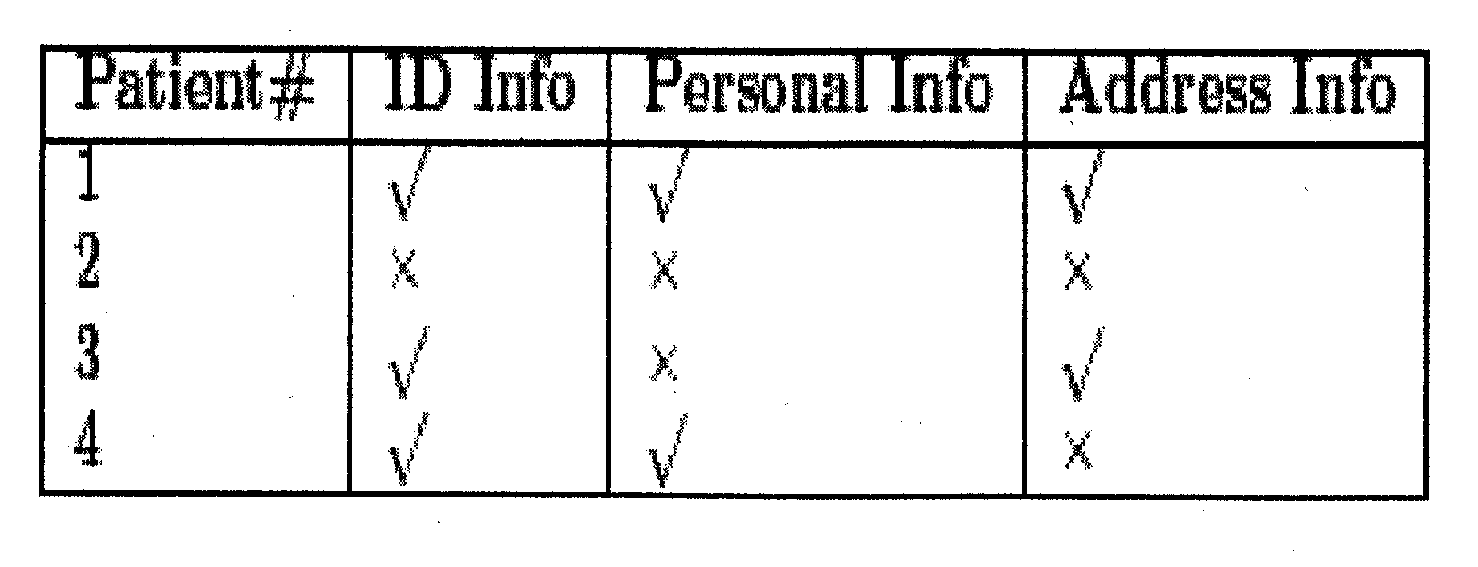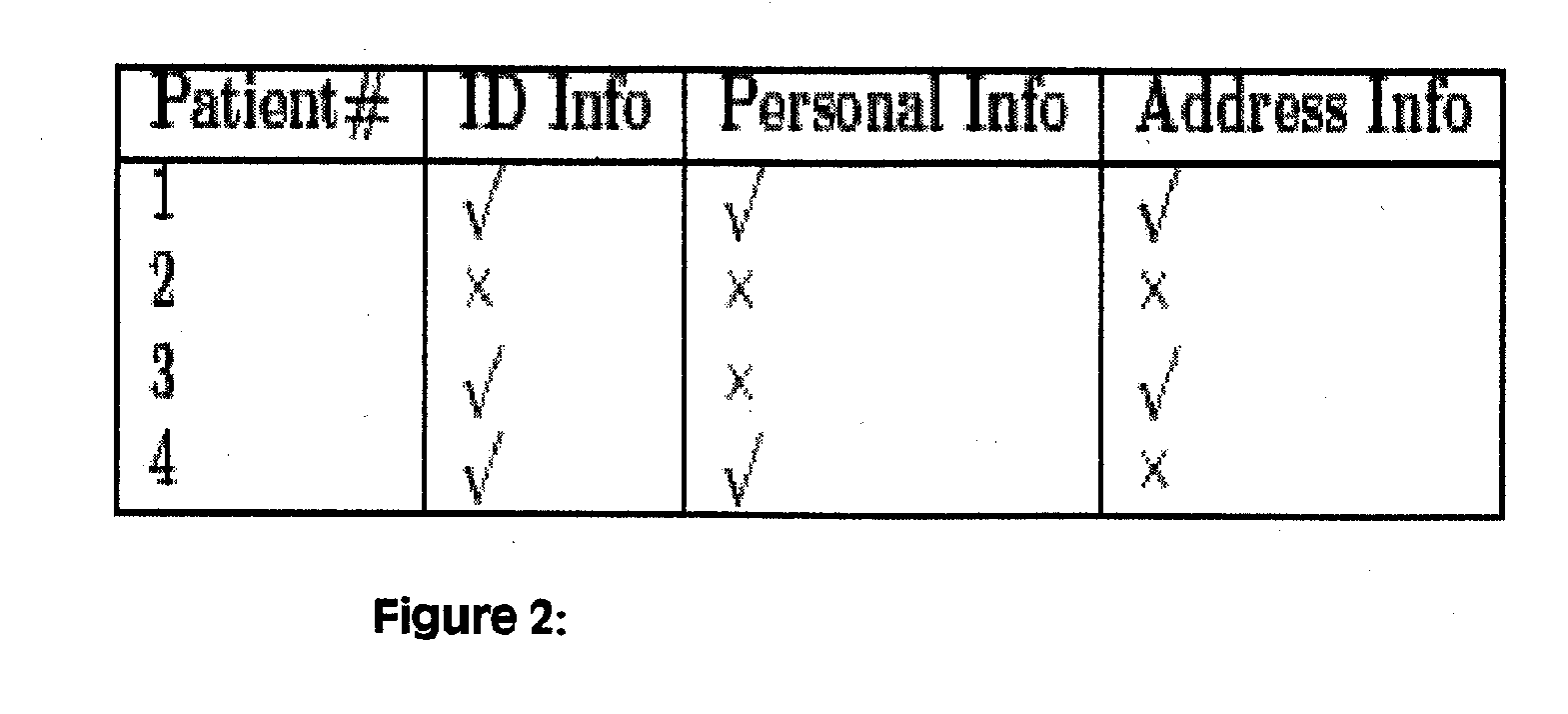System and method for limiting disclosure in hippocratic databases
a database and database technology, applied in the field of system and method for limiting disclosure in hippocratic databases, can solve problems such as privacy leakage, privacy problem requiring an additional degree of flexibility, and inability to provide high quality statistics
- Summary
- Abstract
- Description
- Claims
- Application Information
AI Technical Summary
Benefits of technology
Problems solved by technology
Method used
Image
Examples
Embodiment Construction
[0034] First, the limited disclosure problem is described as it relates to a relational database. Next, several limited disclosure models for relational data and their semantics are described. A basic implementation architecture for limited disclosure and some optimizations to this architecture are provided. Finally, the performance of the implementation is evaluated.
[0035] Limited Data Disclosure
[0036] One of the defining principles of data privacy, limited data disclosure, is based on the premise that data subjects should be given control over who is allowed to see their personal information, and under what circumstances. For example, patients entering a hospital must provide some information at the time of admission. The patient understands that this information may only be used under certain circumstances. The doctors may use the patient's medical history for treatment, and the billing office may use the patient's address information to process insurance claims. However, the h...
PUM
 Login to View More
Login to View More Abstract
Description
Claims
Application Information
 Login to View More
Login to View More - R&D
- Intellectual Property
- Life Sciences
- Materials
- Tech Scout
- Unparalleled Data Quality
- Higher Quality Content
- 60% Fewer Hallucinations
Browse by: Latest US Patents, China's latest patents, Technical Efficacy Thesaurus, Application Domain, Technology Topic, Popular Technical Reports.
© 2025 PatSnap. All rights reserved.Legal|Privacy policy|Modern Slavery Act Transparency Statement|Sitemap|About US| Contact US: help@patsnap.com



